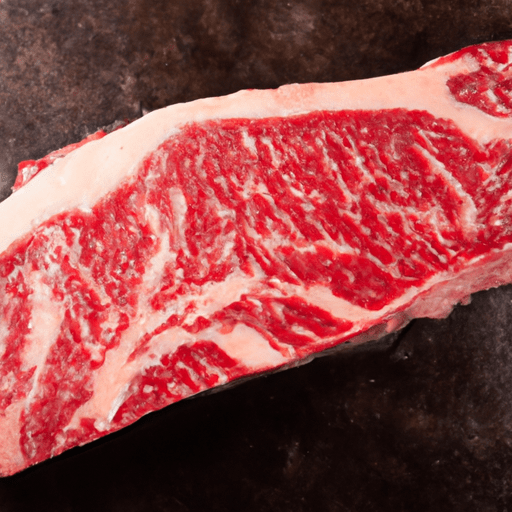The Versatile Chuck Fillet: A Staple in Every Kitchen
Chuck fillet, also known as chuck eye steak or beef chuck tender, is a cut of meat that has gained popularity in recent years. Derived from the chuck primal, a section located in the shoulder region of the cow, chuck fillet offers a delectable taste and a multitude of culinary possibilities. In this post, we’ll explore the unique characteristics of chuck fillet, its wide range of uses in cooking, its nutritional value, and some interesting historical facts.
Taste and Texture
Chuck fillet is well-regarded for its rich and beefy flavor. It has a tender and juicy texture that makes it a favorite among steak enthusiasts. While it may not be as tender as premium cuts like filet mignon or ribeye, its flavor compensates for this, making it a delight to savor.
Versatility in Cooking
Chuck fillet is incredibly versatile, making it suitable for various cooking methods. It can be grilled, pan-fried, broiled, or even slow-cooked to perfection. Due to its tenderness, it doesn’t require extensive marination or aging before cooking. This makes it an ideal choice for those seeking a delicious and hassle-free meal.
One of the most common uses of chuck fillet is for grilling. Its robust flavor holds up well on the grill, providing a delightful char and smokiness. Pan-frying or broiling chuck fillet is also a popular choice, allowing the natural flavors to shine through. Additionally, chuck fillet can be braised or slow-cooked in stews, imparting its unique taste and tenderness to the dish.
Nutritional Value
Chuck fillet is not only delicious but also offers a good range of nutritional benefits. It is an excellent source of protein, essential for maintaining muscle strength and overall health. Furthermore, chuck fillet contains important minerals such as iron, zinc, and B vitamins, which contribute to energy production and a healthy immune system.
It’s worth mentioning that chuck fillet, like other cuts of beef, can be high in fat. However, with proper portion control and trimming excess fat, it can still be enjoyed as part of a balanced diet.
History and Fun Facts
The chuck primal, from which chuck fillet is derived, comes from the shoulder area of the cow. Historically, this section was considered less desirable and often used for ground beef or roasts. However, as people explored the different cuts available, the chuck fillet gained recognition for its flavor and tenderness.
Interestingly, chuck fillet is sometimes referred to as the “poor man’s ribeye” due to its similarities in taste and texture to the more expensive cut. Its affordability and versatility have made it a beloved choice for home cooks and grill enthusiasts alike.
Chuck fillet, with its robust flavor and tender texture, is a worthy addition to any kitchen. Whether it’s grilled to perfection, gently pan-fried, or slow-cooked in a savory stew, it offers a delightful culinary experience. Its nutritional value and adaptability in various cooking methods make it an excellent choice for meat lovers seeking both taste and health benefits.
So, next time you’re at the butcher shop, don’t overlook the mighty chuck fillet. Embrace its versatility and savor the exquisite flavors it brings to your table. Happy cooking!
Chuck Fillet
Origin and Common Uses: Chuck fillet, also known as chuck eye roast or Delmonico steak, comes from the chuck primal cut of a beef carcass. It is a tender and flavorful cut that is prized by many cooks and chefs. The chuck primal is located near the shoulder and neck area of the animal. Chuck fillet is often used in a variety of dishes including pot roasts, stews, braises, and it can also be cut into steaks for grilling or pan-searing.
Nutritional Benefits: Chuck fillet is a rich source of protein, iron, zinc, and B vitamins. It contains a good amount of essential amino acids, which are the building blocks of proteins. Iron is vital for the production of hemoglobin, a protein responsible for carrying oxygen in the blood. Zinc is important for immune function and wound healing, while B vitamins help support energy production and overall metabolism.
Unique Properties: Chuck fillet has a good amount of marbling, which refers to the intramuscular fat present in the meat. This marbling contributes to the flavor and juiciness of the meat when cooked. Due to its location in the chuck primal, chuck fillet benefits from the muscle movements in that area, resulting in more tenderness compared to other cuts from the chuck. However, it is still not as tender as cuts from the loin or rib primal.
Historical Significance: The term “Delmonico steak” is historically associated with a restaurant called Delmonico’s, which was located in New York City. The restaurant was popular in the 19th century and was known for its fine dining and extensive menu. The Delmonico steak, believed to have been named after the restaurant, originally referred to a highly marbled cut from the rib or chuck. While the exact cut referred to as Delmonico steak has varied over time, chuck fillet is sometimes considered a suitable alternative for recreating the classic dish.
Remember to always cook meat thoroughly and follow proper food safety guidelines to prevent foodborne illnesses.




Use the share button below if you liked it.
It makes me smile, when I see it.